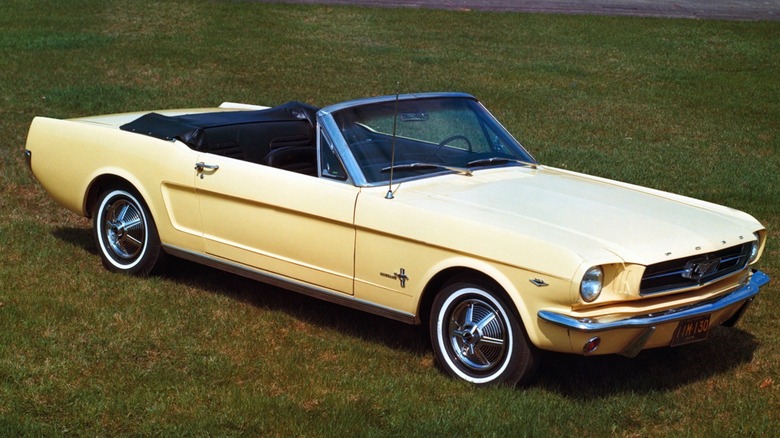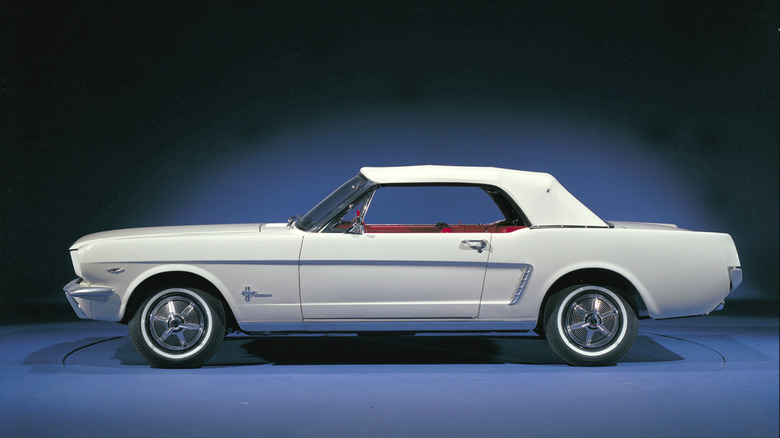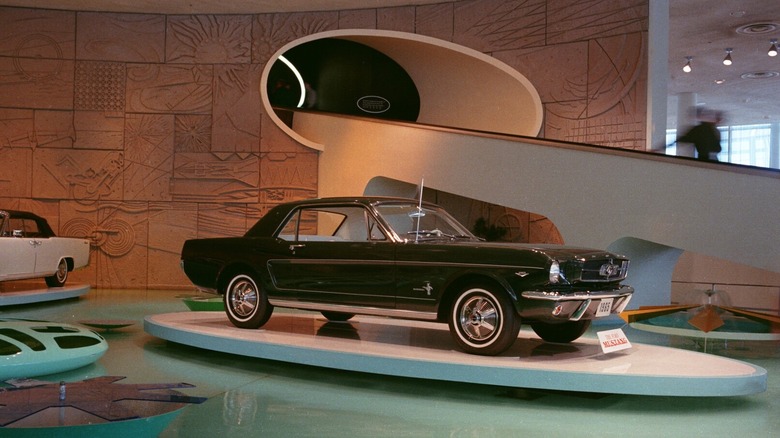What Made The '65 And '66 Ford Mustang So Iconic?
Today, the classic first-generation Ford Mustang represents an American icon –- an undisputed legend of the road, circuit, and silver screen. It's one of the few sports cars which needs no introduction to almost anyone around the world thanks to its recognizable silhouette, logo, and timeless appeal. But that legend had to start somewhere –- after all, not all exceptional cars become such popular sensations, and not all popular cars are that exceptional. Which raises one question: What endeared us to the original Ford Mustang so completely that it birthed the entire "pony car" trend and remained in production for over 60 years?
We'll only explore the initial two model years here (including 1964 ½) for being the main source of its initial, sensational popularity. Some cars, like the Chevrolet Corvette, took a few years to really gain traction. The Mustang, by contrast, hit the ground running at full-speed.
The two primary influences which most directly led to the Mustang's overwhelming popularity are what the car tangibly provided to its customers and how Ford marketed it. Ford developed the Mustang as a competitor to the likes of Ferrari and Jaguar, offering American customers a powerful, inexpensive, and customizable European-inspired platform. In addition, Ford heavily marketed the Mustang on a variety of media and publicity tours, touting the vehicle as a means for the general public to experience the glamor of a true sports car at an affordable price. This multi-month campaign coalesced into the most popular launch of a single car model since the 1927 Ford Model A.
Crafting a magnum opus
The key to success of any innovative car is either filling a niche not met by any other car or performing better than anything else in an already established niche. Such was the case with the Mustang. There were other, similar compact cars at the time, like the Ford Falcon and Rambler American. But popular sentiment and marketing at the time listed these vehicles as economy cars with underpowered, even crude straight-sixes.
Sports cars, on the other hand, represented a market bracket above the average first-time driver. For instance, a 1963 Jaguar XKE retailed for $5,495, more than double a Mustang's base price of $2,368. Its most comparable European counterpart was the MG MGB which produced less than 100 horsepower and used two six-volt batteries wired in-sequence –- less-than-ideal for many Americans unfamiliar with its electrics.
In this sense, it's fair to compare the Mustang to something like the Model T of sports cars. While there were other automobiles before the Model T, it was Ford which made the automobile accessible for the masses. Similarly, the Mustang wasn't the fastest, nor was it the most prestigious, but it represented tremendous value-for-money; combining a svelte body with American power in a way the more expensive and finicky European counterparts could never fully compete with. Moreover, the Mustang touted various options not available on anything else in this price bracket, adding more points in its favor. Without this combination of aesthetics, features, and power, the Mustang likely never would've become so sensational.
Ford's exceptional marketing campaign
Ford built the hype leading up to the Mustang's debut for months, lifting the press ban on February 6, 1964. The company quickly followed up with its debut at the World's Fair on April 17, but not before heavily advertising it through billboards, television, articles, and more. Ford even marketed it on the three major TV networks at the same time, so their advertisements played simultaneously across each channel –- it was the first time in history any company requested this. These advertisements catered to a diverse array of potential customers, ranging from the suburban stay-at-home parent to the adventurous, spirited driver. And it genuinely succeeded in both roles, being comfortable enough for a family of four and powerful enough to satisfy lead-footed owners, according to contemporary reviews.
In short, Ford's marketing hinged on the Mustang's mass-market appeal. Rather than touting it as a pure, dedicated sports car, the Mustang debuted as a sporty family car — and affordably priced to match. It could certainly be optioned-up into a robust circuit racer, culminating with the infamous Shelby Mustangs. Their marketing arrived at the perfect time for such a combination, because you not only had suburban parents with money, but you also had baby-boomers now coming of age and wanting their own trendy sports car.
Ford's aggressive marketing campaign combined with a number of promotions like the Magic Skyway promotion at the 1964 World's Fair, which allowed potential owners to drive the Mustang around a closed-loop. All of this coalesced into a media sensation, which combined with the Mustang's genuinely outstanding qualities, cemented it as incredibly popular right from the start.


